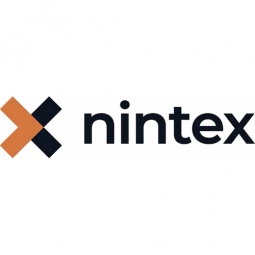Technology Category
- Analytics & Modeling - Process Analytics
- Analytics & Modeling - Robotic Process Automation (RPA)
Applicable Industries
- Buildings
- Finance & Insurance
Use Cases
- Personnel Tracking & Monitoring
- Time Sensitive Networking
About The Customer
Sparebanken Vest is a financial services provider that has been serving private and corporate customers since 1832. The company operates 54 branches in western Norway and employs 800 people. Despite its long history and extensive reach, the company was struggling with disparate processes across its branches, leading to inefficiencies and confusion among staff. The lack of separation between front office and back office functions also meant that front office staff had to perform administrative tasks, taking them away from customers. The company was in need of a solution that could streamline and standardize its processes, improve operational efficiency, and enhance customer service.
The Challenge
Sparebanken Vest, a financial services provider with 54 branches in western Norway and 800 employees, was grappling with a significant challenge. The company was dealing with disparate processes across its branches, with one team leader noting there were “around 60 different ways to do the same thing.” This lack of standardization led to inefficiencies and confusion, especially for new staff members. Additionally, there was no separation between front office and back office functions within the bank. As a result, front office staff in branches had to perform administrative tasks that absorbed time and took them away from customers. The company also faced limitations with Microsoft InfoPath forms, which they initially used as part of their process automation solutions. However, the company had complex schemas that didn’t fit with InfoPath’s capabilities.
The Solution
Sparebanken Vest turned to Nintex K2 Five to streamline and standardize processes across its branches. The bank conducted a competitive evaluation of several process automation solutions and selected Nintex K2 Five for its simple integrations with Microsoft solutions. More than 50 Nintex K2 Five solutions have been developed covering everything from mortgage and credit card applications to change of address requests. The bank also decided to create a centralized back office team and implement standardized, automated processes to improve its operational efficiency and customer service. The introduction of automated processes contributed to a reduction in staff, leading to cost savings. All processes are automated and standardized, making them far more straightforward for new members of staff. The company also replaced Microsoft InfoPath forms with SmartForms, which are more capable of dealing with complexity and allow for the creation and reuse of templates.
Operational Impact
Quantitative Benefit

Case Study missing?
Start adding your own!
Register with your work email and create a new case study profile for your business.
Related Case Studies.

Case Study
Energy Saving & Power Monitoring System
Recently a university in Taiwan was experiencing dramatic power usage increases due to its growing number of campus buildings and students. Aiming to analyze their power consumption and increase their power efficiency across 52 buildings, the university wanted to build a power management system utilizing web-based hardware and software. With these goals in mind, they contacted Advantech to help them develop their system and provide them with the means to save energy in the years to come.

Case Study
Intelligent Building Automation System and Energy Saving Solution
One of the most difficult problems facing the world is conserving energy in buildings. However, it is not easy to have a cost-effective solution to reduce energy usage in a building. One solution for saving energy is to implement an intelligent building automation system (BAS) which can be controlled according to its schedule. In Indonesia a large university with a five floor building and 22 classrooms wanted to save the amount of energy being used.

Case Study
Powering Smart Home Automation solutions with IoT for Energy conservation
Many industry leaders that offer Smart Energy Management products & solutions face challenges including:How to build a scalable platform that can automatically scale-up to on-board ‘n’ number of Smart home devicesData security, solution availability, and reliability are the other critical factors to deal withHow to create a robust common IoT platform that handles any kind of smart devicesHow to enable data management capabilities that would help in intelligent decision-making

Case Study
Real-time In-vehicle Monitoring
The telematic solution provides this vital premium-adjusting information. The solution also helps detect and deter vehicle or trailer theft – as soon as a theft occurs, monitoring personnel can alert the appropriate authorities, providing an exact location.“With more and more insurance companies and major fleet operators interested in monitoring driver behaviour on the grounds of road safety, efficient logistics and costs, the market for this type of device and associated e-business services is growing rapidly within Italy and the rest of Europe,” says Franco.“The insurance companies are especially interested in the pay-per-use and pay-as-you-drive applications while other organisations employ the technology for road user charging.”“One million vehicles in Italy currently carry such devices and forecasts indicate that the European market will increase tenfold by 2014.However, for our technology to work effectively, we needed a highly reliable wireless data network to carry the information between the vehicles and monitoring stations.”

Case Study
Protecting a Stadium from Hazardous Materials Using IoT2cell's Mobility Platform
There was a need for higher security at the AT&T Stadium during the NFL draft. There was a need to ensure that nuclear radiation material was not smuggled inside the stadium. Hazmat materials could often be missed in a standard checkpoint when gaining entry into a stadium.








